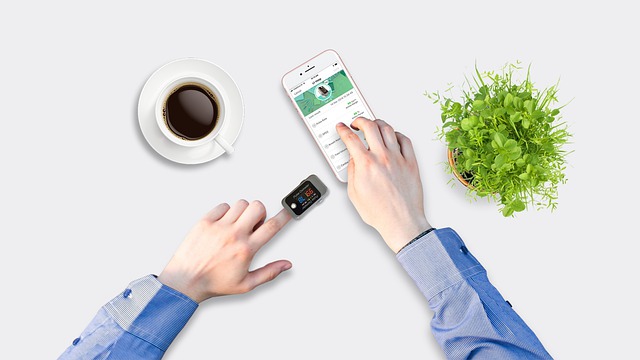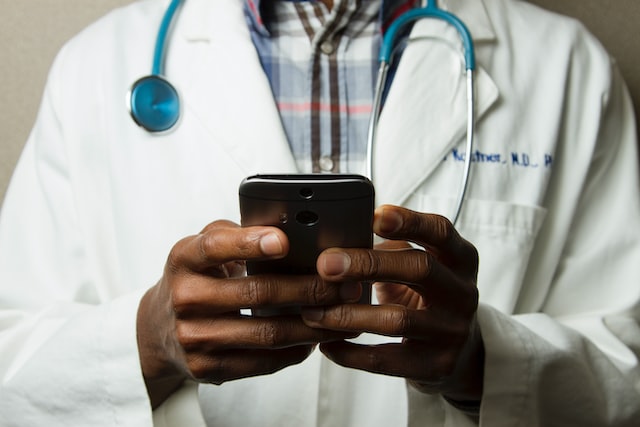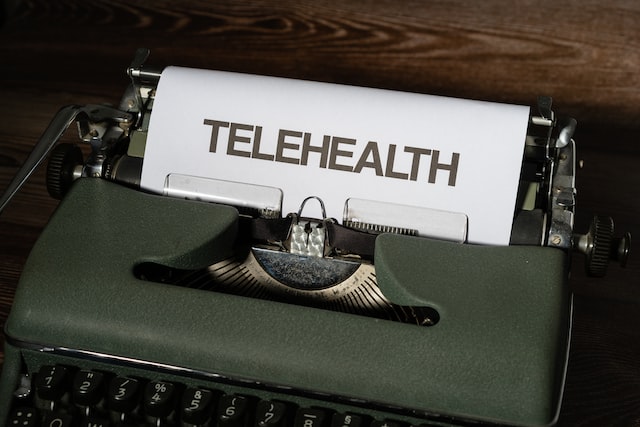
One of the most intriguing trends in today’s healthcare environment is the rising use of virtual healthcare services and delivery platforms. This includes remote patient monitoring (RPM), commonly known as remote physiologic monitoring. Prior to 2020, most people had never heard of RPM, but that is changing as more providers accept the service and prescribe it to their patients.
What is Remote Patient Monitoring (RPM)?
Remote patient monitoring (RPM), though by no means a new care modality, is fast expanding as a result of the COVID-19 pandemic’s limits and the associated regulatory effort to improve access to care.
RPM is the collection and analysis of patient physiologic data using information from patients and electronically transmitting this information to health care providers for assessment. RPM allows healthcare providers to monitor patients outside the clinical setting. This is crucial for chronic disease management, as well as enhancing healthcare access for the elderly, patients in remote locations, and those with mobility challenges. Remote patient monitoring is part of the Internet of Medical Things (IoMT) meta trend.
Basics of Remote Patient Monitoring (RPM)
Remote Patient Monitoring (RPM) can be used to treat both chronic and acute diseases, allowing practitioners to monitor patients between clinic visits or when in-person care is unavailable. Weight scales, pulse oximeters, blood glucose meters, blood pressure monitors, heart monitors, and even specific monitoring for dementia and Parkinson’s disease are used in Remote Patient Monitoring (RPM) programmes. Wearables are another type of Remote Patient Monitoring Device that can be used to track patients’ health over time. Smartwatches and continuous blood glucose monitors are examples of consumer-facing devices.
Wearables appear to be in high demand, with 320 million consumer health and wellness wearable devices expected to ship globally by 2022. This figure might rise to 440 million units shipped by 2024. However, Remote Patient Monitoring (RPM) is not only effective for long-term disease management; it can also be used for more urgent and acute problems.
Furthermore, remote patient monitoring can be utilized to track patient recovery after they have returned home from the hospital. The University of California Los Angeles Health System, for example, maintains a post-surgery RPM programme for heart operation patients.
You May Like: Why Green Apple Is The Super Fruit You Need In Your Diet?
As part of the programme, patients use devices provided in a kit to provide their care team with biometric data such as heart rate, blood pressure, and blood oxygen levels. To make sure the patient is recovering as anticipated, the team can monitor this data. Searches for “IoT healthcare” have increased over 10x over the last 10 years. This shows that healthcare providers and consumers are demanding more advanced, tech-focused medical solutions.

How Remote Patient Monitoring Works:
Even if you grasp the meaning of Remote Patient Monitoring RPM, you may still be perplexed about how it works.
- A provider selects the condition(s) to be managed remotely and initiates an RPM programme to deliver health services to patients. Remote patient monitoring allows providers to acquire a wide range of patient health data. This covers blood pressure, heart rate, vital signs, weight, and blood sugar levels.
- A provider determines that a patient would benefit from remote physiologic monitoring of one or more of the health data types that RPM can acquire. The provider orders or prescribes RPM with the patient’s permission.
- The patient is given a device to collect health data. Remote patient monitoring equipment must be electronically linked, which is typically done using cellular networking or Bluetooth. Blood pressure monitors, weight scales, blood glucose meters, and spirometers are the most popular Remote Patient Monitoring (RPM) equipment. Pulse oximeters and ECG devices are two other gadget types that are seeing greater RPM use.
- Once properly configured, the gadget captures health data and transmits it from patient to provider, typically electronically. Based on the results, the practitioner analyses the data and provides the patient with health and wellness advice and suggestions.
Benefits of Remote Patient Monitoring (RPM):
Given the enormous and widespread benefits to physicians, it is no wonder that remote patient monitoring is gaining popularity. In short, RPM allows practitioners to closely monitor a patient’s chronic health issues without requiring the patient to physically visit a hospital.
- More than 23 million patients in the United States used RPM services and tools.
- A survey of over 1300 physicians indicated that more than eight out of ten were meeting patients through video or phone.
- According to the American Medical Association, nearly nine out of ten healthcare providers said they had invested in or were considering Remote Patient Monitoring Systems.
Aside from these benefits, there are a number of other variables contributing to the growing popularity of RPM. Between public health concerns and the challenges of providing care to an aging population, RPM appears to be here to stay. Practitioners around the country are attracted to this service as a safe and effective way to provide healthcare to their patients.
Another factor fueling the rise in remote patient monitoring utilization is the shortage of practitioners in the United States. The Association of American Medical Colleges (AAMC) predicts a 55,000-person shortage of primary care practitioners by 2033. The country’s overall population increase is expected to be more than 10%, with persons over the age of 65 increasing by more than 45% during the same period, exacerbating the physician shortage.
In light of the fact that practitioner shortages are unavoidable. RPM offers a clever way to maintain high standards of patient care. While enhancing access to care and efficiently and effectively treating more patients.
You May Like: Best Food for Detoxification of Liver
Telehealth Market Trends
Covid-19 created new demand for telehealth. It will increase by 64.3% nationwide this year. Currently, more than 50% of US hospitals use some form of telemedicine and that percentage is only increasing. Regulations have rapidly changed to enable Telehealth coverage. 84% of healthcare executives think telemedicine is important. As patient comfort and satisfaction grow alongside technological advances as well as regulatory and reimbursement barriers decrease.

74% of patients are comfortable communicating with doctors using telehealth. It is becoming a core component of health care services. 67% of telehealth increases patient satisfaction. Telehealth is addressing the core needs of healthcare. Improving health care starts with the ability to gather and analyze comprehensive information. Later respond and recommend personalized treatment plans.
However, Healthcare providers face many challenges in the healthcare industry.
Challenges
- Limited visibility into operations
- Regulations and compliance
Lack of real-time information reduces the time to treatment. Complexity around data interoperability impacts care coordination and the aggregation and analysis of data from multiple sources.
Based on these challenges we have identified the incremental need to aggregate data from many different sensors, wearables, remote patient monitoring devices and other sources in one single platform without the use of a data center or either the public cloud.
Solution
- Aggregating and data analyzing across sources
- Use predictive insights, role-based workflows and automation to more efficiently deliver treatments.
The solutions to address these challenges and their needs lie within.
Today, look at the remote patient monitoring scenarios to enhance care, respond rapidly and lower costs in a secure manner. With patient and healthcare professional satisfaction at the forefront. The constant monitoring enables the health care provider to react quickly to the patient’s condition remotely.
The patient can now submit the data via their application portal. This data is then picked up by the clinician or the physician for review locally. Similarly, clinicians take notes on the laptop that includes health information and then submit them via their application portal. In hospital rooms, patients are continuously monitored through different devices and systems.
All those monitoring data can now be transferred. Whether the data has been collected at home or in the hospital, clinicians can manage and process it locally in real time. It will trigger a plan to receive cardiac rehab devices or an insulin delivery solution bait at the patient’s home.
Difference Between Remote Patient Monitoring (RPM) and Telehealth:
To be clear, telehealth includes remote patient monitoring. RPM is also not included in telemedicine, which is a subset of telehealth.
While the notion of RPM may appear easy, there is some uncertainty about the concept, notably how it varies from telehealth. Differentiating between Remote Patient Monitoring (RPM) and telehealth is critical for a variety of reasons, including coding and payment. “How is RPM different from telehealth? “Telehealth” refers to technology such as telephones, facsimile machines, electronic mail systems, and remote patient monitoring equipment that collect and transmit patient data for monitoring and analysis. While they do not fit the Medicaid definition of telemedicine, they are frequently categorized as telehealth services.
We distinguish between the phrases as follows: “RPM is the use of a system that connects doctors and patients outside of the provider’s organization.” The use of electronic information and telecommunications technology to assist long-distance clinical treatment, patient and professional health-related education, public health, and health management is known as telehealth.”
Conclusion:
To summarize, RPM is not only here, but it is here to stay. Even in the absence of a worldwide pandemic, remote patient monitoring has been silently expanding for decades. It appears to be becoming an essential component of our healthcare delivery system.
Medicare and private health insurers are taking note of RPM’s cost-effectiveness and favourable health outcomes. Which is helping to better access to the programme for those patients who benefit the most from it. Patients are also looking for Remote Patient Monitoring (RPM) services more often as private and public payers encourage them.
Read Next Blog:







